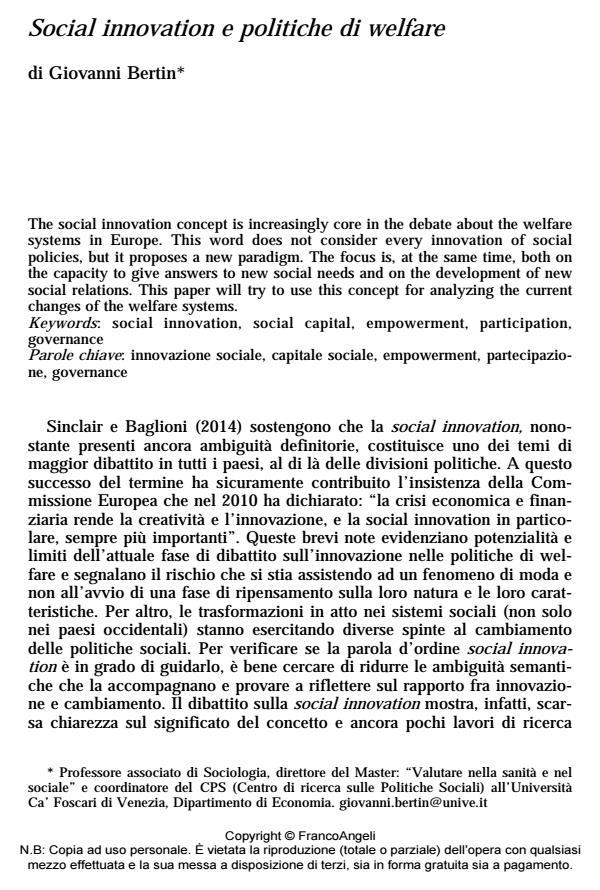Social innovation e politiche di welfare
Titolo Rivista SALUTE E SOCIETÀ
Autori/Curatori Giovanni Bertin
Anno di pubblicazione 2015 Fascicolo 2015/1
Lingua Italiano Numero pagine 14 P. 37-50 Dimensione file 53 KB
DOI 10.3280/SES2015-001004
Il DOI è il codice a barre della proprietà intellettuale: per saperne di più
clicca qui
Qui sotto puoi vedere in anteprima la prima pagina di questo articolo.
Se questo articolo ti interessa, lo puoi acquistare (e scaricare in formato pdf) seguendo le facili indicazioni per acquistare il download credit. Acquista Download Credits per scaricare questo Articolo in formato PDF

FrancoAngeli è membro della Publishers International Linking Association, Inc (PILA)associazione indipendente e non profit per facilitare (attraverso i servizi tecnologici implementati da CrossRef.org) l’accesso degli studiosi ai contenuti digitali nelle pubblicazioni professionali e scientifiche
The social innovation concept is increasingly core in the debate about the welfare systems in Europe. This word does not consider every innovation of social policies, but it proposes a new paradigm. The focus is, at the same time, both on the capacity to give answers to new social needs and on the development of new social relations. This paper will try to use this concept for analyzing the current changes of the welfare systems.
Parole chiave:Innovazione sociale, capitale sociale, empowerment, partecipazione, governance
- Trade unions and employers associations: a new welfare model Daniele Cattaneo, Filippo Monge, in SOCIOLOGIA DEL LAVORO 147/2017 pp.220
DOI: 10.3280/SL2017-147012
Giovanni Bertin, Social innovation e politiche di welfare in "SALUTE E SOCIETÀ" 1/2015, pp 37-50, DOI: 10.3280/SES2015-001004